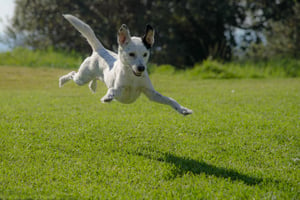Training your dog can be a fun and rewarding experience. Not only can it help you bond with your...
How to Train an Adult Dog: A Comprehensive Guide
Training your adult dog can be an intimidating task. But with the right knowledge and patience, you can teach your pup new tricks and habits in no time. This guide will provide you with an overview of adult dog training, including tips and tricks to help you get started. Read on to find out more!
What Is Adult Dog Training?
Adult dog training is a form of training that focuses on teaching your pup new behaviors, commands, and habits. It can be used to help teach your pup basic manners, such as sitting, staying, and walking on a leash. It can also be used to help modify existing behaviors, such as barking, jumping, and chewing. Adult dog training can be done at home or in a professional setting, depending on your preferences and the needs of your pup.
Benefits of Adult Dog Training
Training your adult dog can have a number of benefits. It can help strengthen the bond between you and your pup, and it can also help you better understand your pup's behavior and needs. Training can also help reduce stress, as it can help your pup learn how to better handle new situations. Finally, training can help your pup become more independent, which can make them more confident and secure.
Tips for Training Your Adult Dog
Training your adult dog can be a daunting task, but with the right knowledge and patience, you can achieve success. Here are some tips to help you get started:
- Set realistic goals: Before you begin training, it's important to set realistic goals for yourself and your pup. It's important to remember that adult dogs have had years to develop their behavior, so it may take more time and patience to teach them new habits. It's also important to remember that some behaviors may not be able to be completely eliminated.
- Be consistent: Consistency is key when it comes to adult dog training. Make sure that you are using the same commands and methods each time, and that you are rewarding your pup for good behavior. This will help your pup learn more quickly and effectively.
- Be patient: Training your adult dog can be a long process, so it's important to be patient. Don't be afraid to take breaks or to go back and review previous lessons. You may also want to enlist the help of a professional trainer if you are having difficulty.
Common Mistakes to Avoid
Training your adult dog can be a challenging process, and there are some common mistakes you should avoid. Here are some of the most common mistakes to avoid when training your pup:
- Not using positive reinforcement: Positive reinforcement is one of the most effective methods for adult dog training. Instead of punishing your pup for bad behavior, focus on rewarding them for good behavior. This will help your pup learn more quickly and effectively.
- Not being consistent: As mentioned above, consistency is key when it comes to adult dog training. Make sure you are using the same commands and methods each time, and that you are rewarding your pup for good behavior.
- Not understanding your pup: It's important to understand your pup's needs and behaviors. Take the time to observe your pup and identify any triggers that may be causing them to act out. This will help you to better understand your pup and to tailor your training methods accordingly.
Training Tools and Equipment
When training your adult dog, there are a few tools and equipment that can help make the process easier. Here are some of the most common tools and equipment used in adult dog training:
- Leash: A leash is an essential tool when it comes to adult dog training. It can help you keep your pup under control, and it can also be used to help teach your pup to walk on a leash. Make sure to choose a leash that is comfortable and secure.
- Treats: Treats are a great way to reward your pup for good behavior. Choose treats that are small and easy to carry, and make sure to use them sparingly. This will help keep your pup motivated and engaged in the training process.
- Crate: A crate can be a great tool for adult dog training. It can provide your pup with a safe space to relax and can also help you manage your pup's behavior when you're not around. Make sure to choose a crate that is the right size for your pup.
Conclusion
Training your adult dog can be an intimidating task, but with the right knowledge and patience, you can teach your pup new tricks and habits in no time. This guide provided you with an overview of adult dog training, including tips and tricks to help you get started. Remember to be consistent, use positive reinforcement, and understand your pup's needs and behaviors. With the right tools and equipment, you can successfully train your adult dog and build a strong bond with them.



